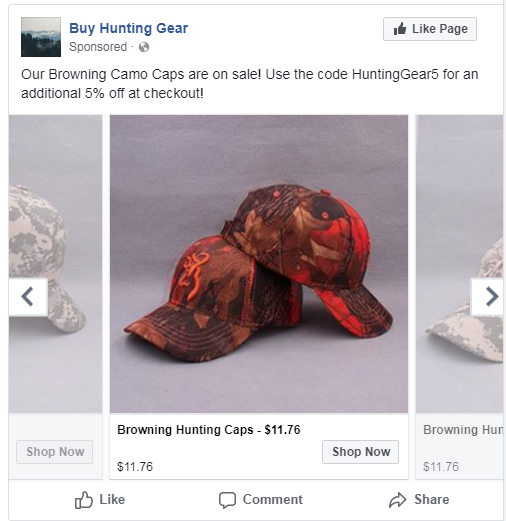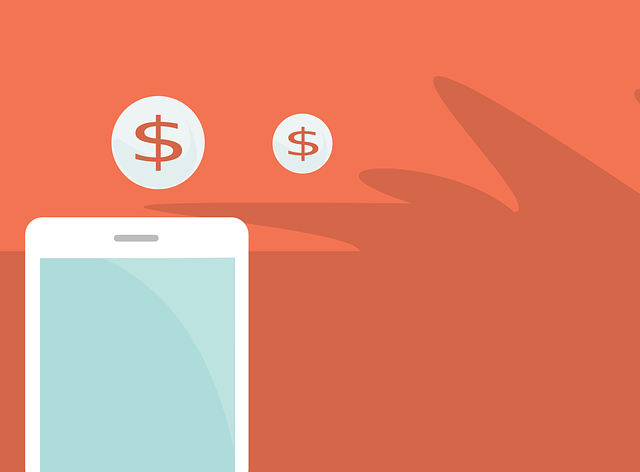Is Dropshipping Dead? – An Honest Look At 68 Dropshipping Store Attempts
If there's one thing I've learned since starting out on my online money making journey it's this: selling dreams is easier than selling results or facts.
Online marketing is both competitive and lucrative, so it's only natural that for every genuine article or video you come across, there's another 15 Tai Lopez wannabes waiting around the corner to promise you the next get rich quick scheme no one else seems to know about yet (right).
From blogging guides that promise novice bloggers that they will make $10K+ a month to billion dollar pyramid schemes like Herbalife, it's evident that there is a lot of money to be made by following this formula.
Now, seeing as I launched my own dropshipping store last April and wrote and in-depth guide on how anyone could start their own dropshipping store, I have decided to write a follow-up to that post more than a year later for a few reasons:
- Overpriced dropshipping scams/courses have been extremely lucrative for the past few years and are continuing.
- Every article on the first page of Google ranking for the term ‘is dropshipping dead' are incentivized by referral fees to lie.
- I want to clear the air and share what I have learned since launching my own store more than a year ago.
Let's get to it.
But First…How I Made $600+ Selling A Single $7 Hat
To demonstrate the truth behind the whole ‘selling dreams is easy money' strategy, let me recap how my entire dropshipping experiment has unfolded.
I launched a 100% transparent dropshipping store last April that sold hunting products. I told my readers what domain name I was using, how my store looked like, some of the products I was sourcing from AliExpress, and what my Instagram marketing strategy was.

I included pictures of my first and only sale, some info on my failed Facebook advertising endeavors, and summarized the whole thing by stating that while I believed Dropshipping was viable (at the time), it was definitely hard work and unlikely to succeed without a lot of effort, money, and time.

To cap it all off, I even updated the post later to explain that I was closing my store because it took too much time away from running WebMonkey, and that the whole experiment had basically been a fun way to learn and blow $50.
Yes, I did plug the post with Shopify affiliate links, and yes, I did have a fairly optimistic tone and vibe throughout the entire post (give me a break, I was convinced it would work).
But I was nowhere close to what these bozos are doing:

Despite this, since writing my original dropshipping guide, I have made almost $700 in referral income from various people signing up to create a Shopify store:

So, to make almost $700, all I had to do was sell one lousy hunting cap online and to write an honest post about it.
Imagine what you could accomplish if you bundled all the hopes and dreams in the world into a $500 dropshipping course instead?
The Data I Have On Dropshipping Stores
As a Shopify affiliate, I can actually see the names and status of any store I refer.
Of all the stores I have referred to open a dropshipping store, 1 store is currently on trial, 7 are active, and 60 are inactive:

Some of the active stores are quite sleek, have a decent Instagram following, and seem to have a fighting chance at generating revenue.
Most stores, however, end up closing like mine did.
Obviously this is a limited dataset and people may close their shop for various reasons that are separate from the legitimacy of this business model (i.e. lack of capital, time, laziness, moving on to something else).
However, I want to reiterate this point: dropshipping is extremely difficult and you will need time + resources to have any chance of success.
Why Is Dropshipping Dying/So Difficult?
Many people will disagree with me when I say that dropshipping is dead, so I guess I can rephrase it as ‘dropshipping is currently gasping for air and about to drown.'
There are a few reasons for this, in my opinion.
1 – You Are Competing With Amazon More Than Ever Before:
I didn't buy many products from Amazon back in 2010, and neither did most of the world according to data from Statista.

Amazon now has incredible inventory, the most competitive pricing, fast shipping through Prime, and a massive amount of advertising dollars and brand loyalty that is gobbling up Ecommerce market share.
You can't just sell watches, t-shirts, or generic shit with a dropshipping store anymore because everyone already knows Amazon is the place to shop online for that sort of stuff.
So, in order for you to have any success, I argue you need to leverage impulse buying behavior and an incredibly narrow niche/specific product to generate sales.
And, this method also has some barriers.
2 – You Need To Pay To Buy Data
This isn't a problem with the model since using paid advertising to test products and optimize accordingly isn't anything new, but this is a significant barrier to entry on dropshipping that most guides do not discuss.
Let's say you find the perfect niche item to add to a dropshipping store, like these fish flip flops (someone told me these were a hot dropshipping item for a bit):

Assuming you were one of the first people to spot this trendy item and got a store launched in time (easier said than done), you would have to spend at least a few hundred dollars between opening your store and testing how the product sells on Facebook.
If you are completely new to paid advertising (or even if you are experienced) you will probably make mistakes, and it will take time to narrow down the right audience.
If you can afford to possibly lose a few grand trying to make your product catch, then go for it. Maybe you can optimize your cost-per-conversion to make your money back and some profit (off of a very thin margin, of course, since you will have competitors + Amazon to deal with).
3 – The Ability To Brand & Scale
I now realize that you are between a rock and a hard place when picking a dropshipping niche.
If you take the route I did with Buy Hunting Gear, you can attempt to build a brand image over time and establish yourself in a niche…you just have to deal with competition from the actual brands in the market.
Alternatively, you can try to fish for impulse buys, but then you really have no ability to brand your store (what are you, Fish Flip Flops & Co?) or to scale past the fad.
Some dropshipping gurus have suggested that you open a ‘general' store so you can quickly pivot to the next hot item, but this also has problems.
You definitely can't brand that store easily, you're competing with people who already do this like This Is Why I'm Broke. Plus, you'll still need a significant advertising budget to cycle through product testing.
Again, this doesn't mean it is impossible to make a profit by dropshipping, but there are more barriers to entry and risk than I previously thought.
The Dropshipping Scam – Some Common Warning Signs
If you search for information on if starting a dropshipping store is a good idea, you will be overwhelmed by the amount of posts that suggest giving it a shot.
This is, in all fairness, just like my previous dropshipping guide. I figure there is no harm in posts that encourage people to try to open their own dropshipping store as long as they don't make any promises or paint a picture that is different than reality.
So, what are some common signs you might be buying into the dropshipping scam?
1 – Ludicrously Priced ‘Courses' With Aggressive Affiliate/MLM Deals
This warning sign applies to pretty much any online money making topic, but has been particularly apparent within the dropshipping niche.
If you've done a fair amount of research into opening a dropshipping store, you've probably come across guides or videos that recommend signing up for a course or ‘masterclass' as this bullshit is often called.
I'm not entirely against courses, but many dropshipping guides often have:
- An enormous price-tag associated with them.
- Extremely aggressive affiliate backbones, so there are plenty of content creators willing to promote them (think Bluehost but on steroids).
Take Dropship Lifestyle for an example.

Dropship lifestyle originally cost $250 and had a juicy 50% affiliate referral deal, but this isn't necessarily insane for courses.
However, after the course had been promoted heavily by an army of affiliates, the model changed to a MLM Network and the price skyrocketed to between $3,000-$5,000.

And, since you have to purchase the course in order to promote it (for a 50% referral fee), you can imagine where many of the positive reviews for this course probably come from.
You buy this overpriced garbage, you quickly realize that you're out of pocket by 4 grand, and then your only hope to recoup your money is to slap up some YouTube videos praising the damn thing so other people buy into it as well. This is MLM to a tee.
2 – You're Being Sold A Lifestyle, Not A Business Strategy

Imagine if you were being pitched as an investor to buy into a startup and the only thing you were told was ‘bro, if you invest you can drive this sick car like me.'
Many dropshipping videos or guides take this approach. They flex a Lamborghini (definitely rented), mansions (definitely AirBnB), or other expensive shit and promise aspiring entrepreneurs that they can escape the 9-5 grind and make millions.
If you buy a course, you need to be given actual value.
You need to get answers to the questions I'm asking in this post.
How do you compete with Amazon? How do you tackle issues of scale, niche selection, and branding? What strategies can you use as a beginner on Facebook ads to test new markets?
Many guides/videos (free or paid) skirt around these questions as well with the third dropshipping scam warning sign.
3 – Genuine Concerns Are Dismissed With Straw-Man Arguments
This is my favorite part about the dropshipping scam business.
Whenever people ask if dropshipping is dead, there's 1 of 2 responses.
The first is this:

A Google Trend isn't proof. Ask anyone who invested in Bitcoin at $20K and they can tell you exactly why.
I've referenced Google Trends in posts like my thoughts on the digital nomad movement, but that's to show interest, not proof of concept.
The second argument used (and this one is really amusing) is this:

Yes, the billion dollar company Wayfair uses a dropshipping model of sorts, so your Fish Flip Flop empire is bound to take off.
You can literally use this argument for anything.
Did you know Amazon started out as some guy selling shit online? I think you should buy my course and open an Ecommerce website.
Don't let straw-man arguments disguise the fact that you might be buying into a dropshipping scam.
Final Thoughts
I don't like to write pessimistic posts on WebMonkey because I think the internet is wonderful and that there are plenty of opportunities to start a profitable side hustle.
However, this vertical is particularly vicious when it comes to promoting products or dreams to people in order to make a quick buck.
I don't necessarily feel bad for writing my original dropshipping guide.
But, I think I would feel guilty if I never touched on this topic or other making money online scams.
I will admit that honest content creators in this niche face challenges. We want to share as much info as possible, but that also opens the doors for copycats to steal ideas. This is why many courses/videos never show a storefront, and instead rely on magical graphs of income and sales (probably photoshopped, but I digress).
I just want to stress the fact that it is critical to do due diligence and never risk more than you can afford to lose
I write posts like how to start a $100/month blog, and while I try my best to impart how much work you'll need to put in to succeed, you still need to approach everything I say with a grain of salt as well.
There is so much opportunity out there to improve your finances and make extra income, but always remember to keep your guard up and never risk something you can't afford to lose!
If you read this post to the end, thank you 🙂 I'll catch you guys in the next one with something more upbeat!
P.S. if you want to dabble in Ecommerce but want less risk, I suggest taking a look at my Etsy Print On Demand experiment for some ideas!













